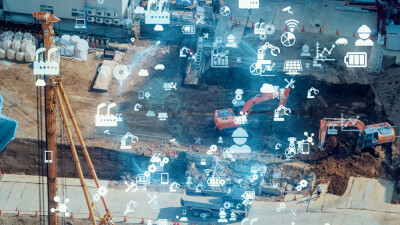As we sit here today in mid-August, we are now a little over a week removed from the 2024 Summer Olympic Games, hosted wonderfully in Paris. It wasn’t an event without hiccups – the problems with the Siene probably chief among them – but an event of this size is effectively impossible to run without any issues. Relative to how an event of this scale would reasonably be expected to go, it was a resounding success for the City of Light.
Of course, in today’s environment as soon as one thing ends there is very little time for actual reflection. Instead, we move on to the next thing. In this case, we’re already looking forward to the 2028 Summer Games, particularly here in the United States since Los Angeles is serving as the host city. The second largest city in the U.S. has experience in this realm, having hosted the Games 40 years ago, and the planning for 2028 is already well underway. Now, it’s being kicked into overdrive as the 2024 Games are in the books.
The city and the official group in charge of these Games – LA28 – have some lofty goals for the first Summer Games to be hosted in the United States since the 1996 Games were held in Atlanta, Georgia. For one thing, the city has said that they plan for this event to be “car-free,” with public transportation being required to get to and from any event in the city. Anyone who has traveled in Los Angeles – or most of the western part of the U.S., really – can attest to how divergent that is from normal life in L.A.
Along with that goal, LA28 has also indicated that they are planning to put this event together without building any new, permanent venues. In other words, all events will be held either in venues that already exist, or venues that will be just temporary structures. This will be a pretty big deal if they are able to pull it off, as this is one of the biggest problems cities tend to have after hosting the Olympic Games. The 2016 Games in Rio are most infamous for this, leaving massive arenas abandoned after the Games. There were other events that led to this predicament in Brazil – a major recession in the region, for one – but you don’t have to look too hard around the internet to find many images of abandoned venues from previous Games.

When I first saw this news, I immediately thought that a big reason why this will be possible is because of new technologies that the AEC industry has adopted over the last decade or so. And in fact, LA28 announced last month that Autodesk had been announced as the organization’s official “Make and Design” partner for these Olympics.
In fairness, part of the reason L.A. will be able to (potentially) pull this off is because they are a large city that already has a substantial footprint for a wide variety of sports. They have, for example, two NBA arenas that can be used for various events in 2028, plus multiple local universities with major athletic departments. However, even for existing buildings there are very specific changes that will need to be made for the wide variety of events featured at any Olympics.
That means there will be a need for some of the core technologies we talk about at Geo Week News with respect to the AEC industry. For example, one would expect laser scanning to be a part of this, providing crucial point cloud data of a building’s precise status at the start of any retrofitting. Compared to having to work off of photographs, this is a huge advantage that wasn’t available to previous Games organizers.
That’s just one example, and really brings us to the bigger point – massive amounts of data will need to not only be collected, but be easily accessed by multiple stakeholders whenever necessary. Whether it’s BIM data, the aforementioned point cloud data, or even just important documents, there needs to be easy access to these. This is where a platform like Autodesk comes in, being able to manage all of this data, something that hasn’t always been an easy task for this industry on much smaller projects until relatively recently.
One of the biggest reasons some citizens of major cities are against hosting the Olympics is that new venues often get built up – often tearing down natural areas to make room – for a two-week event and then left to be abandoned after that. Los Angeles is looking to prove that this isn’t necessary today. As mentioned, the city has some built in advantages that other host cities don’t have and that does play a big role, but with data sharing platforms more accessible and advanced than ever before, and the proliferation of tools like laser scanning and BIM, retrofitting existing structures for these temporary purposes is more possible than ever before.






